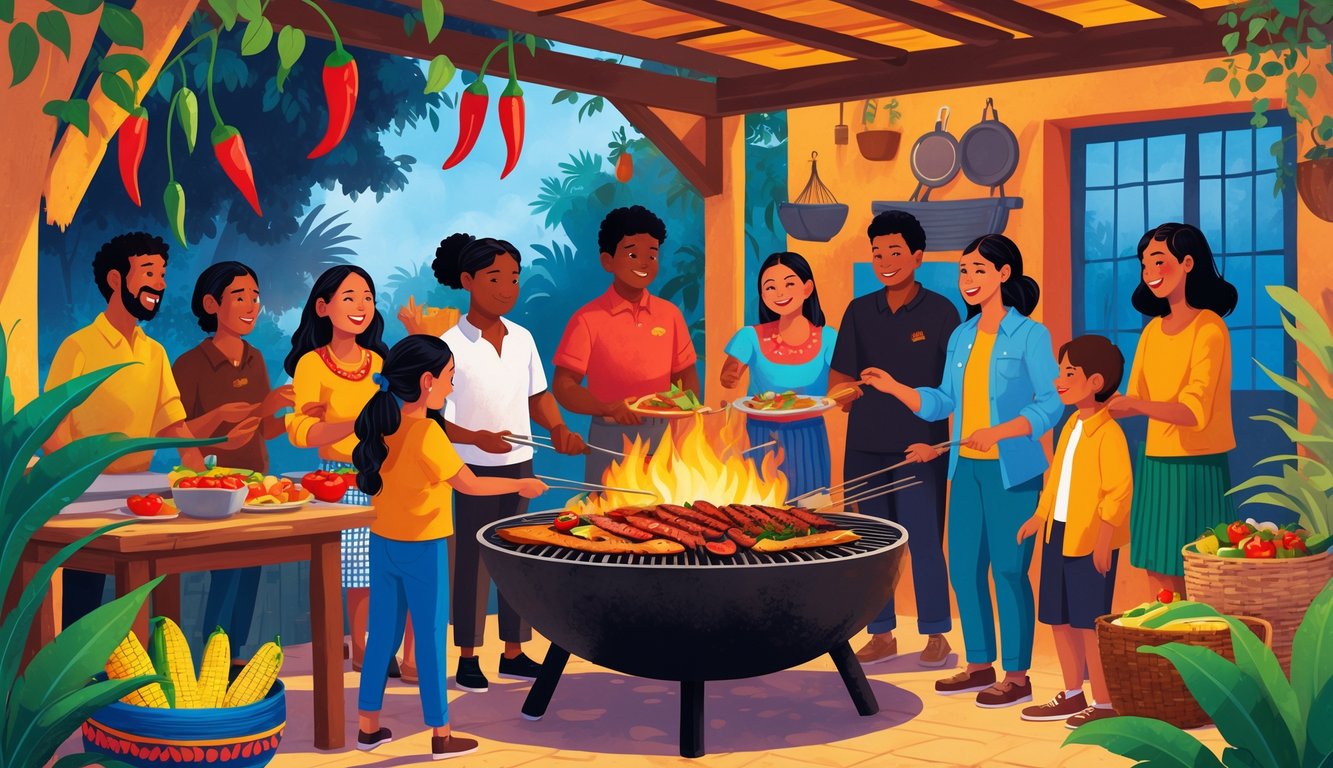The Role of Indigenous and Native Ingredients
Chewing through another kitchen trend—literally—I keep seeing cooks rip up old recipes, not for nostalgia, but because they’re bored or curious. Nobody’s recreating grandma’s stew for likes. It’s all about experimenting with ancient grains, weird seeds, fruits I can’t even pronounce. It’s chaos, but the delicious kind. The best stuff just happens.
Quinoa and Ancient Grains in Modern Cooking
Why’s quinoa suddenly everywhere? Back in college, my nutrition professor wouldn’t shut up about it—complete protein, amino acids, “superfood” status. Andean farmers had this figured out centuries ago, but only now is everyone obsessed with it for every meal.
Saw a chef use toasted quinoa and canihua (which, let’s be real, nobody spells right) for gluten-free pizza crust. It came out gritty, nutty, way more interesting than regular flour. People forget—grains like kiwicha and tarwi survived drought, colonizers, and now, Instagram food trends. Now they’re the backbone of smart plant-based cooking.
And for anyone traumatized by bland grain salads at conference buffets—nope, these recipes have flavor. Bulk grains, yes, but also native herbs, roasted chilies, maybe some starchy veg, and because nobody can leave things alone, pickled onion or chimichurri on top. Critics call it “fusion,” but really, it’s just rediscovering what indigenous South American cuisine always did—just with better marketing and way more Instagram filters.
Amaranth’s Revival
Okay, so amaranth—why did everyone ignore it for decades and now it’s all over menus? My neighbors let it rot in the sidewalk cracks, but suddenly it’s the hot thing with pastry people. I mean, I’ve watched chefs puff it like weird popcorn—it’s a little sticky, tastes kind of like sweet spinach if you squint. Sometimes it shows up in granola bars next to cacao nibs and, for some reason, chestnut honey. Bakers keep insisting there’s this “mineral edge” that wheat can’t touch. I don’t know if I buy it, but fine.
I’m not one of those people who buys everything the wellness crowd shouts about, but amaranth’s nutritional stats are wild—lysine off the charts, calcium like milk, and gluten-free for the Instagram crowd. Still, the only people who really nail it are grandmas grinding it by hand. I tried that once, and my kitchen looked like a flour bomb went off. Never again.
Chefs toss amaranth into tamal dough, scatter the popped seeds on ceviche, or mash it up with panela for a dessert that tastes nothing like those sad “energy bars” at the store. If you want the real deal, you’ll need a local grower who’s as stubborn as a mule and, honestly, way more patience than I can muster.
Local Fruits and Vegetables
Why does everyone ignore lucuma or chayote until some chef “rediscovers” them? Makes no sense. Markets still explode with maracuyá in season. Cooks blend it into vinaigrettes, or jam it into pastries, or make juice that doesn’t remotely taste like the apples at the store. Why bother with imported fruit when this stuff exists? No idea.
Tubers—oca, mashua, yacón—get roasted until they’re sticky, then smashed with burnt garlic or shoved into gnocchi. My friend swears a fish stew with native squash and ají amarillo “tastes like my great-aunt’s stories and none of her actual cooking.” What does that even mean? I ate it anyway. Gone in minutes.
Honestly, the hype isn’t about some ancient comeback; it’s chefs getting weird with biodiversity. I tried a guava tart with wild chilies and fresh cheese—chef called it his “grand experiment” but I’m not sure he was joking. Ingredient mashups aren’t a trend anymore. They’re just how things are now.
Grilling as a Social Tradition

Every time someone tries to sell me on a new kitchen gadget, I just laugh—have you seen South American grilling lately? Massive iron grates, random wood thrown on, bonfires that get out of control, and my buddy’s cousin losing half his eyebrow. We’re not sitting quietly; it’s chaos—smoke, yelling, fighting over tongs, and somewhere in there, Uruguay and Argentina basically turned “hospitality” into a competition.
Contemporary Asado Gatherings
I swear, my sneakers haven’t stopped smelling like mesquite since last summer. Everyone hauls out their rusty old grills—sometimes DIY, sometimes those “asadores” that cost a fortune—but nobody cares about brands. I’ve seen accountants, teachers, and this one sports doc nearly come to blows over when to flip the ribeye. Dumb? Sure. But that “only I can cook this right” attitude never dies.
Friends in Buenos Aires won’t shut up about Saturday asados. They quote Francis Mallmann like he’s a prophet—“live fire transforms a gathering into an event”—then argue about cuts (entraña for the snobs, chorizo for the kids), fat, even the weather. It’s trivia night, but everyone’s yelling and there’s way more meat. Last time, someone put coriander seeds in the chimichurri and nearly got kicked out. The grill’s not just for food; it’s for flexing memory, ego, and who’s got the best family story. That’s the whole point—South American dishes never taste the same twice, and that’s probably the only thing you can count on.
Churrasco in Modern Kitchens
Churrasco’s everywhere now—tiny stovetops, balconies, those IKEA-looking grills that somehow work. Brazilian expats trade hacks for getting grill marks indoors, TikTok’s full of people broiling steak with the oven door open. My cousin says you haven’t lived until you’ve set off the smoke alarm twice in one night. Maybe he’s right?
I sneak into these “urban churrasco” things sometimes, and nobody knows what’s on the menu: picanha, lomo, provoleta, all sliced on boards that are probably plastic. Someone brought vegan chorizo once and the room nearly exploded. Still, grill culture drags everyone into the same dumb arguments: Malbec or caipirinha, homemade salsa or sriracha from a bottle. Paula Zúñiga, who actually knows what she’s doing, told me, “Technique’s useless if the vibe’s wrong,” and she’s right—forgetting to argue ruins the whole thing. Uruguay and Argentina keep exporting this wild, messy grilling style, and any kitchen that gets it—even on an electric stove—feels more like an inside joke than a trend.



